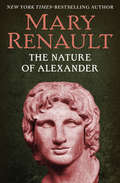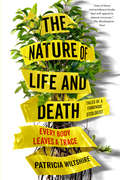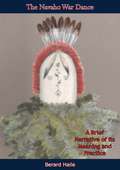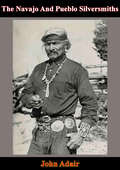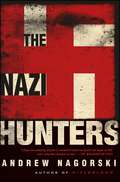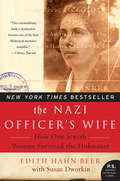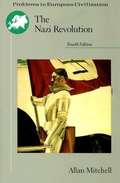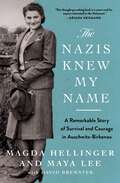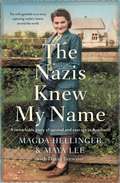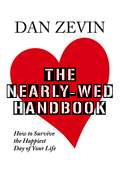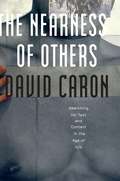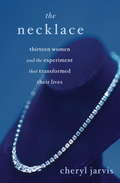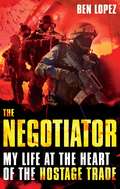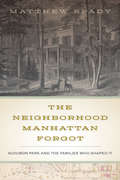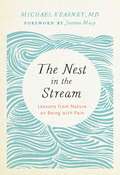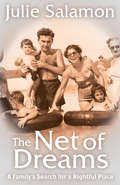- Table View
- List View
The Nature and Future of Philosophy
by Michael DummettPhilosophy is a discipline that makes no observations, conducts no experiments, and needs no input from experience. It is an armchair subject, requiring only thought. Yet that thought can advance knowledge in unexpected directions, not only through the discovery of new facts but also through the enhancement of what we already know. Philosophy can clarify our vision of the world and provide exciting ways to interpret it. Of course, philosophy's unified purpose hasn't kept the discipline from splintering into warring camps. Departments all over the world are divided among analytical and continental schools, Heidegger, Hegel, and other major thinkers, challenging the growth of the discipline and obscuring its relevance and intent. Having spent decades teaching in American, Asian, African, and European universities, Michael Dummett has felt firsthand the fractured state of contemporary practice and the urgent need for reconciliation. Setting forth a proposal for renewal and reengagement, Dummett begins with the nature of philosophical inquiry as it has developed for centuries, especially its exceptional openness and perspective-which has, ironically, led to our present crisis. He discusses philosophy in relation to science, religion, morality, language, and meaning and recommends avenues for healing around a renewed investigation of mind, language, and thought. Employing his trademark frankness and accessibility, Dummett asks philosophers to resolve theoretical difference and reclaim the vital work of their practice.
The Nature and Future of Philosophy (Columbia Themes in Philosophy)
by Michael DummettPhilosophy is a discipline that makes no observations, conducts no experiments, and needs no input from experience. It is an armchair subject, requiring only thought. Yet that thought can advance knowledge in unexpected directions, not only through the discovery of new facts but also through the enhancement of what we already know. Philosophy can clarify our vision of the world and provide exciting ways to interpret it.Of course, philosophy's unified purpose hasn't kept the discipline from splintering into warring camps. Departments all over the world are divided among analytical and continental schools, Heidegger, Hegel, and other major thinkers, challenging the growth of the discipline and obscuring its relevance and intent. Having spent decades teaching in American, Asian, African, and European universities, Michael Dummett has felt firsthand the fractured state of contemporary practice and the urgent need for reconciliation. Setting forth a proposal for renewal and reengagement, Dummett begins with the nature of philosophical inquiry as it has developed for centuries, especially its exceptional openness and perspective-which has, ironically, led to our present crisis. He discusses philosophy in relation to science, religion, morality, language, and meaning and recommends avenues for healing around a renewed investigation of mind, language, and thought. Employing his trademark frankness and accessibility, Dummett asks philosophers to resolve theoretical difference and reclaim the vital work of their practice.
The Nature of Alexander
by Mary RenaultAn &“intriguing and invaluable&” biography of Alexander the Great by the novelist whose fiction redefined Ancient Greece (The New York Times). Acclaimed writer Mary Renault is widely known for her provocative historical novels of Alexander the Great and his lovers. But she also authored this nonfiction classic, a fresh, illuminating look at a man whose legend has remained larger than life for more than two thousand years. From his dysfunctional family dynamics to his molding under Aristotle, from his shocking rise to power at age twenty to the staggering violence of his military campaigns, Renault is clear-eyed about Alexander&’s accomplishments and his flaws. Infectious in its enthusiasm, this is a penetrating study of an unrivaled conqueror, enduring icon, and fascinating man. Hailed as both &“a splendid achievement in nonfiction&” (The Plain Dealer) and &“the perfect companion to her Alexander novels&” (The Wall Street Journal), Renault&’s engrossing and accessible biography stands alone in the pantheon of Alexander the Great literature.This ebook features an illustrated biography of Mary Renault including rare images of the author.
The Nature of Life and Death: Every Body Leaves a Trace
by Patricia WiltshireA riveting blend of science writing and true-crime narrative that explores the valuable but often shocking interface between crime and nature--and the secrets each can reveal about the other--from a pioneer in forensic ecology and a trailblazing female scientist.From mud tracks on a quiet country road to dirt specks on the soles of walking boots, forensic ecologist Patricia Wiltshire uses her decades of scientific expertise to find often-overlooked clues left behind by criminal activity. She detects evidence and eliminates hypotheses armed with little more than a microscope, eventually developing a compelling thesis of the who, what, how, and when of a crime. Wiltshire's remarkable accuracy has made her one of the most in-demand police consultants in the world, and her curiosity, humility, and passion for the truth have guided her every step of the way.A riveting blend of science writing and true-crime narrative, The Nature of Life and Death details Wiltshire's unique journey from college professor to crime fighter: solving murders, locating corpses, and exonerating the falsely accused. Along the way, she introduces us to the unseen world all around us and underneath our feet: plants, animals, pollen, spores, fungi, and microbes that we move through every day. Her story is a testament to the power of persistence and reveals how our relationship with the vast natural world reaches far deeper than we might think.
The Nature of Nature: Examining the Role of Naturalism in Science
by William Dembski Bruce GordonThe intellectual and cultural battles now raging over theism and atheism, conservatism and secular progressivism, dualism and monism, realism and antirealism, and transcendent reality versus material reality extend even into the scientific disciplines. This stunning new volume captures this titanic clash of worldviews among those who have thought most deeply about the nature of science and of the universe itself.Unmatched in its breadth and scope, The Nature of Nature brings together some of the most influential scientists, scholars, and public intellectuals--including three Nobel laureates--across a wide spectrum of disciplines and schools of thought. Here they grapple with a perennial question that has been made all the more pressing by recent advances in the natural sciences: Is the fundamental explanatory principle of the universe, life, and self-conscious awareness to be found in inanimate matter or immaterial mind? The answers found in this book have profound implications for what it means to do science, what it means to be human, and what the future holds for all of us.
The Navaho War Dance: A Brief Narrative of its Meaning and Practice
by Berard HaileExplains the meanings and customary forms of the Navajo war dance, including information on the drums and rattle sticks, the progression of the dance through each of its three days, and the different roles of the various participants.
The Navajo And Pueblo Silversmiths (The\civilization Of The American Indian Ser. #25)
by John AdairProbably no native American handicrafts are more widely admired than Navajo weaving and Navajo and Pueblo silver work. This book contains the first full and authoritative account of the Indian silver jewelry fashioned in the Southwest by the Navajo and the Zuni, Hopi, and other Pueblo peoples. It is written by John Adair, a trained ethnologist who has become a recognized expert on this craft."A volume conspicuously pleasing in its format and so strikingly handsome in its profuse illustrations as to rivet your attention once it chances to fall open. With the care of a meticulous and thorough scholar, the author has told the story of his several years' investigation of jewelry making among the Southwestern Indians. So richly decorative are the plates he uses for his numerous illustrations showing the jewelry itself, the Indians working at it and the Indians wearing it--that the conscientious narrative is surrounded by an atmosphere of genuinely exciting visual experience."--The Dallas Times HeraldThe Navajo and Pueblo Silversmiths provides a full history of the craft and the actual names and localities of the pioneer craftsmen who introduced the art of the silversmith to their people. Despite its present high stage of development, with its many subtle and often exquisite designs, the art of working silver is not an ancient one among the Navajo and Pueblo Indians. There are men still living today who remember the very first silversmiths.
The Naval War of 1812 (Modern Library War)
by Theodore RooseveltPublished when Theodore Roosevelt was only twenty-three years old, The Naval War of 1812 was immediately hailed as a literary and scholarly triumph, and it is still considered the definitive book on the subject. It caused considerable controversy for its bold refutation of earlier accounts of the war, but its brilliant analysis and balanced tone left critics floundering, changed the course of U.S. military history by renewing interest in our obsolete forces, and set the young author and political hopeful on a path to greatness. Roosevelt's inimitable style and robust narrative make The Naval War of 1812 enthralling, illuminating, and utterly essential to every armchair historian. The books in the Modern Library War series have been chosen by series editor Caleb Carr according to the significance of their subject matter, their contribution to the fieldof military history, and their literary merit.
The Nazi Conspiracy: The Secret Plot to Kill Roosevelt, Stalin, and Churchill
by Brad Meltzer Josh MenschINSTANT NEW YORK TIMES BESTSELLER"An absolute home run! You will never look at WWII the same way again." —Brad Thor, #1 bestselling author"Meltzer and Mensch are masters." —Jon Meacham, author The Soul of America"A true story that reads like a thriller." —Alexander S. Vindman, LT. Col., U.S. Army (Ret.)"An outstanding and memorable reading experience....a true page-turner from beginning to end." —Bookreporter.comFrom the New York Times bestselling authors of The First Conspiracy and The Lincoln Conspiracy comes the little-known true story of a Nazi plot to kill FDR, Joseph Stalin, and Winston Churchill at the height of World War II.In 1943, as the war against Nazi Germany raged abroad, President Franklin Roosevelt had a critical goal: a face-to-face sit-down with his allies Joseph Stalin and Winston Churchill. This first-ever meeting of the Big Three in Tehran, Iran, would decide some of the most crucial strategic details of the war. Yet when the Nazis found out about the meeting, their own secret plan took shape—an assassination plot that would’ve changed history.A true story filled with daring rescues, body doubles, and political intrigue, The Nazi Conspiracy details FDR’s pivotal meeting in Tehran and the deadly Nazi plot against the heads of state of the three major Allied powers who attended it.With all the hallmarks of a Brad Meltzer and Josh Mensch page-turner, The Nazi Conspiracy explores the great political minds of the twentieth century, investigating the pivotal years of the war in gripping detail. This meeting of the Big Three changed the course of World War II. Here’s the inside story of how it almost led to a world-shattering disaster.
The Nazi Hunters
by Andrew NagorskiMore than seven decades after the end of the Second World War, the era of the Nazi Hunters is drawing to a close as they and the hunted die off. Their saga can now be told almost in its entirety.After the Nuremberg trials and the start of the Cold War, most of the victors in World War II lost interest in prosecuting Nazi war criminals. Many of the lower-ranking perpetrators quickly blended in with the millions who were seeking to rebuild their lives in a new Europe, while those who felt most at risk fled the continent. The Nazi Hunters focuses on the small band of men and women who refused to allow their crimes to be forgotten--and who were determined to track them down to the furthest corners of the earth. The Nazi Hunters reveals the experiences of the young American prosecutors in the Nuremberg and Dachau trials, Benjamin Ferencz and William Denson; the Polish investigating judge Jan Sehn, who handled the case of Auschwitz commandant Rudolf Höss; Germany's judge and prosecutor Fritz Bauer, who repeatedly forced his countrymen to confront their country's record of mass murder; the Mossad agent Rafi Eitan, who was in charge of the Israeli team that nabbed Eichmann; and Eli Rosenbaum, who rose to head the US Justice Department's Office of Special Investigations that belatedly sought to expel war criminals who were living quietly in the United States. But some of the Nazi hunters' most controversial actions involved the more ambiguous cases, such as former UN Secretary-General Kurt Waldheim's attempt to cover up his wartime history. Or the fate of concentration camp guards who have lived into their nineties, long past the time when reliable eyewitnesses could be found to pinpoint their exact roles. The story of the Nazi hunters is coming to a natural end. It was unprecedented in so many ways, especially the degree to which the initial impulse of revenge was transformed into a struggle for justice. The Nazi hunters have transformed our fundamental notions of right and wrong. Andrew Nagorski's book is a richly reconstructed odyssey and an unforgettable tale of gritty determination, at times reckless behavior, and relentless pursuit.
The Nazi Officer's Wife: How One Jewish Woman Survived the Holocaust
by Edith H. BeerEdith Hahn was an outspoken young woman in Vienna when the Gestapo forced her into a ghetto and then into a labor camp. When she returned home months later, she knew she would become a hunted woman and went underground. With the help of a Christian friend, she emerged in Munich as Grete Denner. There she met Werner Vetter, a Nazi Party member who fell in love with her. Despite Edith's protests and even her eventual confession that she was Jewish, he married her and kept her identity a secret.<P><P> In wrenching detail, Edith recalls a life of constant, almost paralyzing fear. She tells of German officials who casually questioned the lineage of her parents; of how, when giving birth to her daughter, she refused all painkillers, afraid that in an altered state of mind she might reveal something of her past; and of how, after her husband was captured by the Soviet army, she was bombed out of her house and had to hide while drunken Russian soldiers raped women on the street.<P> Yet despite the risk it posed to her life, Edith created a remarkable record of survival. She saved every document and set of papers issued to her, as well as photographs she managed to take inside labor camps. Now part of the permanent collection at the Holocaust Memorial Museum in Washington, D.C., these hundreds of documents, several of which are included in this volume, form the fabric of a gripping new chapter in the history of the Holocaust -- complex, troubling, and ultimately triumphant. <P><b>A New York Times Bestseller</b>
The Nazi Revolution: Hitler's Dictatorship and the German Nation (Fourth Edition)
by Allan MitchellThis anthology explores the Nazi movement in the context of German history and society.
The Nazis Knew My Name: A Remarkable Story of Survival and Courage in Auschwitz
by Magda Hellinger Maya LeeThe &“thought-provoking…must-read&” (Ariana Neumann, author of When Time Stopped) memoir by a Holocaust survivor who saved an untold number of lives at Auschwitz through everyday acts of courage and kindness—in the vein of A Bookshop in Berlin and The Nazi Officer&’s Wife.In March 1942, twenty-five-year-old kindergarten teacher Magda Hellinger and nearly a thousand other young women were deported as some of the first Jews to be sent to the Auschwitz concentration camp. The SS soon discovered that by putting prisoners in charge of the day-to-day accommodation blocks, they could deflect attention away from themselves. Magda was one such prisoner selected for leadership and put in charge of hundreds of women in the notorious Experimental Block 10. She found herself constantly walking a dangerously fine line: saving lives while avoiding suspicion by the SS and risking execution. Through her inner strength and shrewd survival instincts, she was able to rise above the horror and cruelty of the camps and build pivotal relationships with the women under her watch, and even some of Auschwitz&’s most notorious Nazi senior officers. Based on Magda&’s personal account and completed by her daughter&’s extensive research, this is &“an unputdownable account of resilience and the power of compassion&” (Booklist) in the face of indescribable evil.
The Nazis Knew My Name: A remarkable story of survival and courage in Auschwitz
by Magda Hellinger Maya LeeThe extraordinarily moving memoir by Australian Slovakian Holocaust survivor Magda Hellinger, who saved an untold number of lives at Auschwitz through everyday acts of courage, kindness and ingenuity. In March 1942, twenty-five-year-old kindergarten teacher Magda Hellinger and nearly a thousand other young Slovakian women were deported to Poland on the second transportation of Jewish people sent to the Auschwitz concentration camp. The women were told they'd be working at a shoe factory. At Auschwitz the SS soon discovered that by putting Jewish prisoners in charge of the day-to-day running of the accommodation blocks, camp administration and workforces, they could both reduce the number of guards required and deflect the distrust of the prisoner population away from themselves. Magda was one such prisoner selected for leadership and over three years served in many prisoner leader roles, from room leader, to block leader – at one time in charge of the notorious Experimental Block 10 where reproductive experiments were performed on hundreds of women – and eventually camp leader, responsible for 30,000 women. She found herself constantly walking a dangerously fine line: using every possible opportunity to save lives while avoiding suspicion by the SS, and risking torture or execution. Through her bold intelligence, sheer audacity, inner strength and shrewd survival instincts, she was able to rise above the horror and cruelty of the camps and build pivotal relationships with the women under her watch, and even some of Auschwitz's most notorious Nazi senior officers including the Commandant, Josef Kramer. Based on Magda's personal account and completed by her daughter Maya's extensive research, including testimonies from fellow Auschwitz survivors, this awe-inspiring tale offers us incredible insight into human nature, the power of resilience, and the goodness that can shine through even in the most horrific of conditions.
The Nearly Departed: Or my family & other foreigners
by Brenda CullertonCullerton's parents were always eccentric. Her mother gardened in curlers, pop beads, and black satin underpants, while her father hid wads of cash in shoes in the garage. This is a haunting, heartbreaking, and incredibly funny book that is a love letter to parents, family, and home--however strange they may be.
The Nearly-Wed Handbook
by Dan ZevinTogether you've entered a strange new world of deranged caterers, militant photographers, and prima donna florists. You find yourselves incapable of discussing anything non-nuptial, and you won't rest until you've registered for those perfect pewter grape scissors. Are the two of you going nuts? Nope, you're just planning a wedding..."If you're caught up in the furor of planning a wedding, Nearly Wed could help you maintain a sense of humor long enough to at least have one." -Entertainment Weekly, Erik EsckilsenDan Zevin's latest book is Dan Gets a Minivan: Life at the Intersection of Dude and Dad (Scribner, 2012), which has been optioned by Adam Sandler's Happy Madison Productions along with his previous book, The Day I Turned Uncool. A finalist for the Thurber Prize for American Humor, Dan has followed his readers through each phase of life, from post-college coping (Entry-Level Life) to tying the knot (The Nearly-wed Handbook) to developing a disturbing new interest in lawn care and wine tastings (Uncool). And that was all before he had kids. Which leads us back to this minivan situation.Dan has been a comic commentator for NPR, a humor columnist for The New York Times, and a contributor to print and digital publications including Rolling Stone, The New Yorker, Maxim, Details, Real Simple, and Parents. He also wrote an original sitcom pilot for CBS and Warner Brothers. His latest project is Star Vehicle, a YouTube talk show he hosts inside his minivan.Dan lives with his wife, kids, and pet rabbit in the suburbs of New York, where he has become an active member of his local Costco.
The Nearness of Others: Searching for Tact and Contact in the Age of HIV
by David Caron&“Funny how a gay man&’s hand resting heavily on your shoulder used to say let&’s fuck but now means let&’s not. Funny how ostensible nearness really betrays distance sometimes.&” —from The Nearness of OthersIn this radical, genre-bending narrative, David Caron tells the story of his 2006 HIV diagnosis and its aftermath. On one level, The Nearness of Others is a personal account of his struggle as a gay, HIV-positive man with the constant issue of if, how, and when to disclose his status. But searching for various forms of contact eventually leads to a profound reassessment of tact as a way to live and a way to think, with our bodies and with the bodies of others.In a series of brief, compulsively readable sections that are by turns moving and witty, Caron recounts his wary yet curious exploration of an unfamiliar medical universe at once hostile and protective as he embarks on a new life of treatment without end. He describes what it is like to live with a disease that is no longer a death sentence but continues to terrify many people as if it were. In particular, living with HIV provides an unexpected opportunity to reflect on an age of terror and war, when fear and suspicion have become the order of the day. Most of all, Caron reminds us that disclosing HIV-positive status is still far from easy, least of all in one of the many states—such as his own—that have criminalized nondisclosure and/or exposure.Going well beyond Caron&’s personal experience, The Nearness of Others examines popular culture and politics as well as literary memoirs and film to ask deeper philosophical questions about our relationships with others. Ultimately, Caron eloquently demonstrates a form of disclosure, sharing, and contact that stands against the forces working to separate us.
The Nebraska Adventure
by Jean A. LukeshThe book is all about Nebraska history with interesting facts on its geography, natural resources, early inhabitants,economics, etc.
The Necklace
by Cheryl JarvisThis is the amazing true story of thirteen women who don't want to give up on their dreams. They club together to buy a gorgeous necklace, each of them get it for four weeks at a time. They meet every month to find out what the necklace (now dubbed 'Jewellia') has been up to. The club has some rules: if someone goes to Paris, they get the necklace. At least once, everyone has to wear the necklace whilst making love. It's now two years later, and the necklace has been loaned out to nieces, grandmas, friends and granddaughters. It has been worn by brides and colleagues and sisters and friends. And when it's their turn for the necklace the women of Jewelia have worn it for both the daily routines and special events of their lives, to teach school, to work in the farmer's market, to go fishing and skydiving. It's raised money for charity. It's started something. The Necklace is the story of how an object of desire became a catalyst for connection, friendship and more. It's like Calendar Girls, only maybe a bit more glamorous, glitzy and sparkling.
The Negotiator: A Memoir
by George J. MitchellCompelling, poignant, enlightening stories from former Senate Majority Leader George Mitchell about growing up in Maine, his years in the Senate, working to bring peace to Northern Ireland and the Middle East, and what he’s learned about the art of negotiation during every stage of his life.It’s a classic story of the American Dream. George Mitchell grew up in a working class family in Maine, experiencing firsthand the demoralizing effects of unemployment when his father was laid off from a lifelong job. But education was always a household priority, and Mitchell embraced every opportunity that came his way, eventually becoming the ranking Democrat in the Senate during the administrations of George H.W. Bush and Bill Clinton. Told with wit, frankness, and a style all his own, Senator Mitchell’s memoir reveals many insights into the art of negotiation. Mitchell looks back at his adventures in law and politics—including instrumental work on clean air and water legislation, the Iran-Contra hearings, and healthcare reform—as well as life after the Senate, from leading the successful Northern Ireland peace process, to serving as chairman of The Walt Disney Company, to heading investigations into the use of steroids in baseball and unethical activity surrounding the Olympic Games. Through it all, Senator Mitchell’s incredible stories—some hilarious, others tragic, all revealing—offer invaluable insights into critical moments in the last half-century of business, law, and politics, both domestic and international.
The Negotiator: My Life at the Heart of the Hostage Trade
by Ben Lopez"I'm writing this book under a pseudonym.If I used my real name, I may become a hostage myself. And I don't want that. I've seen what it can do to people."Ben Lopez is a Kidnap-for-Ransom consultant. He spends his days travelling from one crisis zone to the next, negotiating with people who value money over life. On behalf of government agencies, law enforcement teams, multinational corporations and private clients, Ben sets up and commands the negotiator's cell, bartering with some of the world's most desperate people for the safe return of their captives. Working alongside a shadowy team of former spies and special operatives, his arsenal of psychological techniques is just as powerful as brute force. He remains on location for as long as it takes to get the job done. Then he disappears.
The Negotiator: My life at the heart of the hostage trade
by Ben Lopez"I'm writing this book under a pseudonym.If I used my real name, I may become a hostage myself. And I don't want that. I've seen what it can do to people."Ben Lopez is a Kidnap-for-Ransom consultant. He spends his days travelling from one crisis zone to the next, negotiating with people who value money over life. On behalf of government agencies, law enforcement teams, multinational corporations and private clients, Ben sets up and commands the negotiator's cell, bartering with some of the world's most desperate people for the safe return of their captives. Working alongside a shadowy team of former spies and special operatives, his arsenal of psychological techniques is just as powerful as brute force. He remains on location for as long as it takes to get the job done. Then he disappears.
The Neighborhood Manhattan Forgot: Audubon Park and the Families Who Shaped It
by Matthew SpadyAudubon Park’s journey from farmland to cityscapeThe study of Audubon Park’s origins, maturation, and disappearance is at root the study of a rural society evolving into an urban community, an examination of the relationship between people and the land they inhabit. When John James Audubon bought fourteen acres of northern Manhattan farmland in 1841, he set in motion a chain of events that moved forward inexorably to the streetscape that emerged seven decades later. The story of how that happened makes up the pages of The Neighborhood Manhattan Forgot: Audubon Park and the Families Who Shaped It.With a colorful cast of characters drawn from the upper crust of nineteenth-century New York City, this fully illustrated history peels back the many layers of a rural society evolving into an urban community, enlivened by the people who propelled it forward: property owners, tenants, laborers, and servants. Thoroughly researched through primary and secondary sources, as well as private collections, The Neighborhood Manhattan Forgot tells the intricate tale of how individual choices in the face of family dysfunction, economic crises, technological developments, and the myriad daily occurrences that elicit personal reflection and change of course pushed Audubon Park forward to the cityscape that distinguishes the neighborhood today. A longtime evangelist for Manhattan’s Audubon Park neighborhood, author Matthew Spady delves deep into the lives of the two families most responsible over time for the anomalous arrangement of today’s streetscape: the Audubons and the Grinnells. Buoyed by his extensive research, Spady reveals the darker truth behind John James Audubon (1785–1851), a towering patriarch who consumed the lives of his family members in pursuit of his own goals. He then narrates how fifty years after Audubon’s death, George Bird Grinnell (1849–1938) and his siblings found themselves the owners of extensive property that was not yielding sufficient income to pay taxes, insurance, and maintenance. Like the Audubons, they planned an exit strategy for controlled change that would have an unexpected ending. Beginning with the Audubons’ return to America in 1839, The Neighborhood Manhattan Forgot follows the many twists and turns of the area’s path from forest to city, ending in the twenty-first century with the Audubon name repurposed in today’s historic district, a multi-ethnic, multi-racial urban neighborhood far removed from the homogeneous, Eurocentric Audubon Park suburb.
The Nest in the Stream: Lessons From Nature On Being With Pain
by Michael KearneyA concise and inspirational book for anyone dealing with chronic or acute pain by a long time palliative care doctor who is greatly inspired by Native American wisdom and the natural world. This book is a celebration of impermanence and what it means to be awake, alive, and connected to the world.The Nest in the Stream is an encouraging and inspiring book for the times we live in. Michael Kearney, a physician whose day job is alleviating the pain and suffering of others, shows that how we live with our pain matters hugely, as it affects our quality of living and our capacity to find healing for ourselves, for others, and for our world. Drawing on engaged Buddhism, the indigenous wisdom of Native American and Celtic spirituality, and the powerful teachings he gained by observing nature, Kearney presents a new model for resilience and self-care. Traditional models of self-care emphasize the importance of professional boundaries to protect us from stress, and time out to rest and recover. The Nest in the Stream offers a way of being with pain that is infused with mindfulness, openness, compassion, and deep nature connection that encourages us to act for the freedom and welfare of all. It will appeal to those whose everyday occupation involves dealing with pain, such as healthcare workers, environmental activists, or those working on the front lines of trauma, but it will also be of interest to everyone who longs to live in our wounded world with an open heart.
The Net of Dreams: A Family's Search for a Rightful Place
by Julie SalamonThe author of The Devil's Candy and Wendy and the Lost Boys--herself the daughter of Holocaust survivors--shares her family's stories, which take them from the Carpathian Mountains of Eastern Europe to the small Appalachian town where she was raised.

